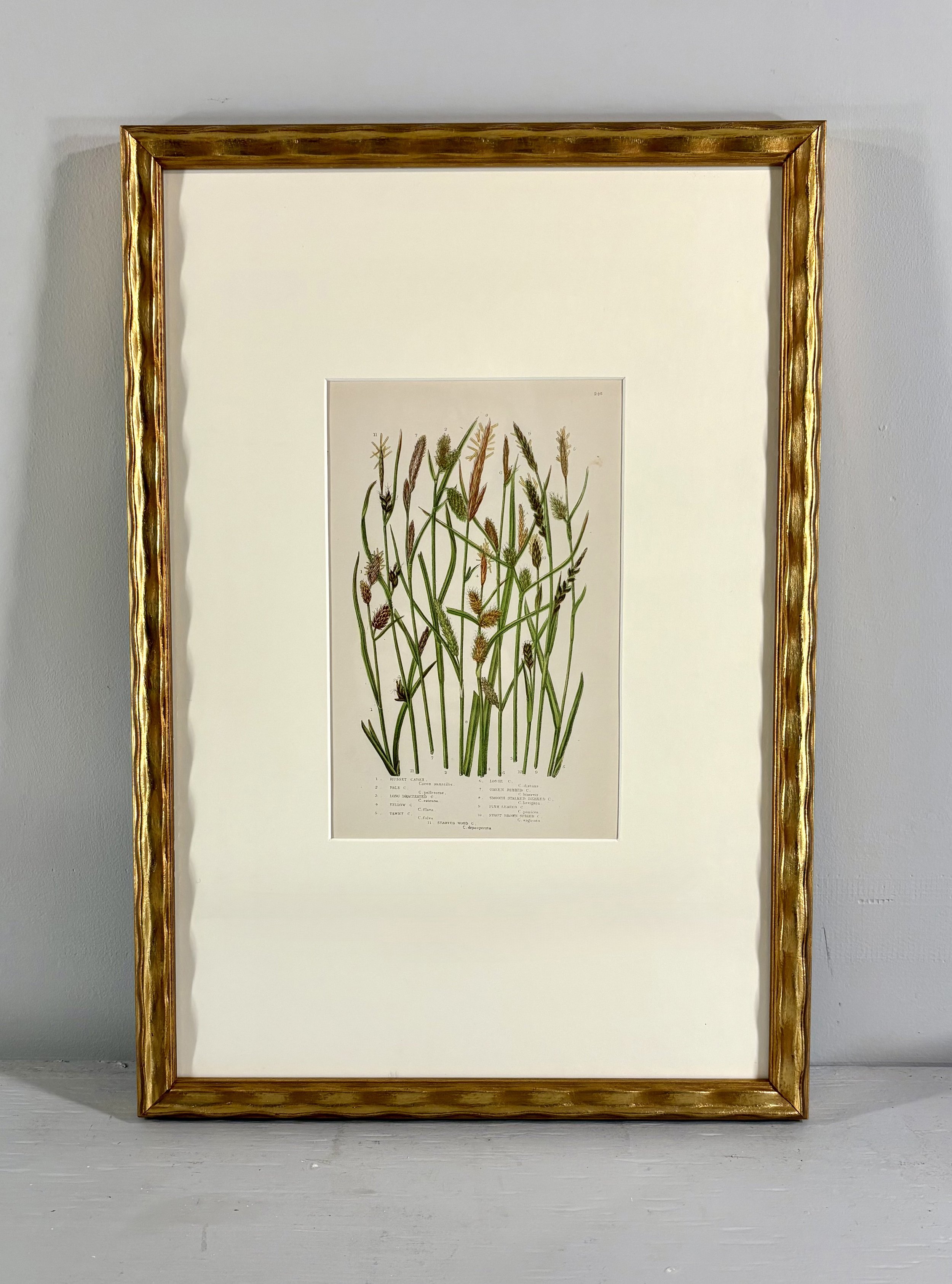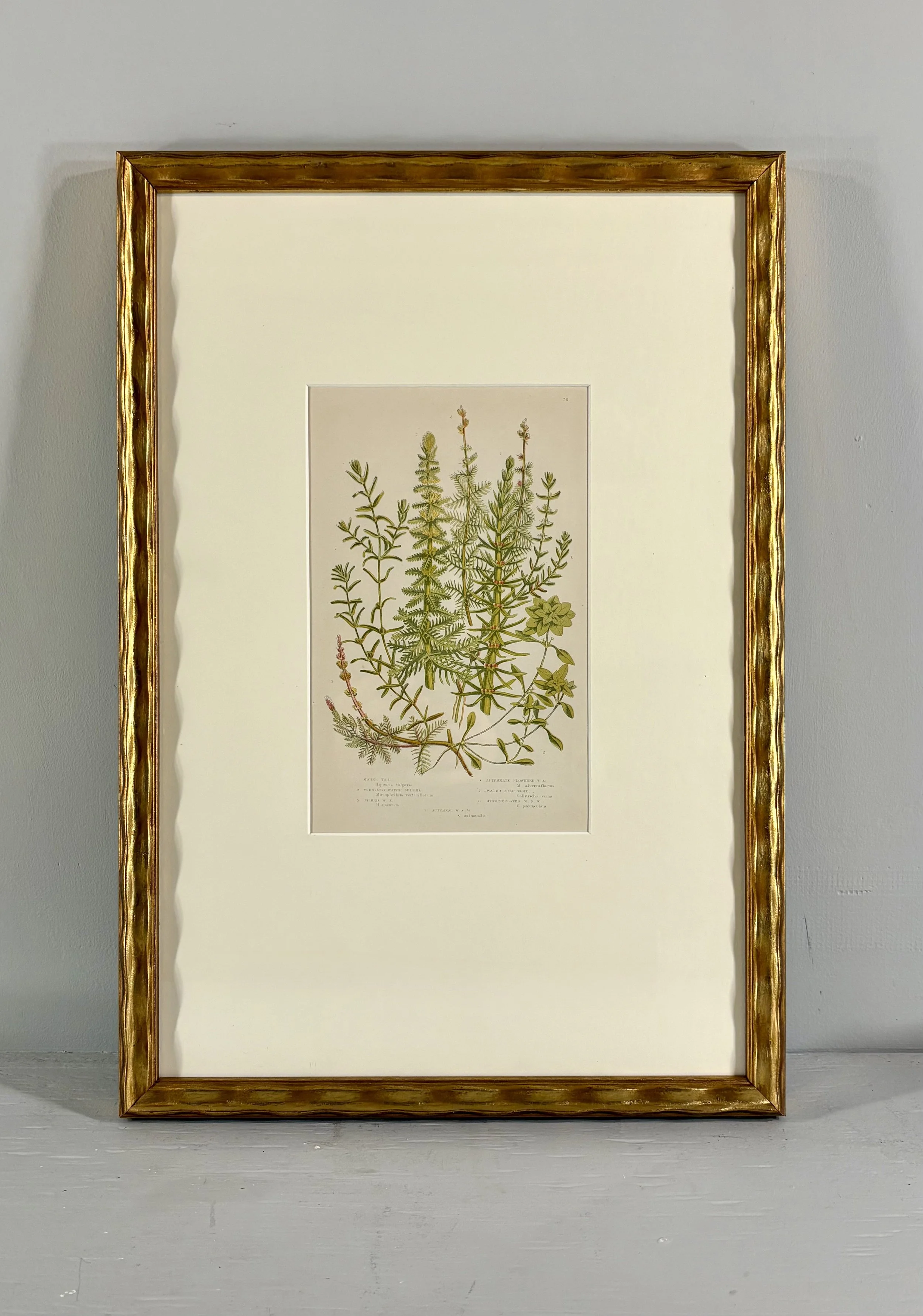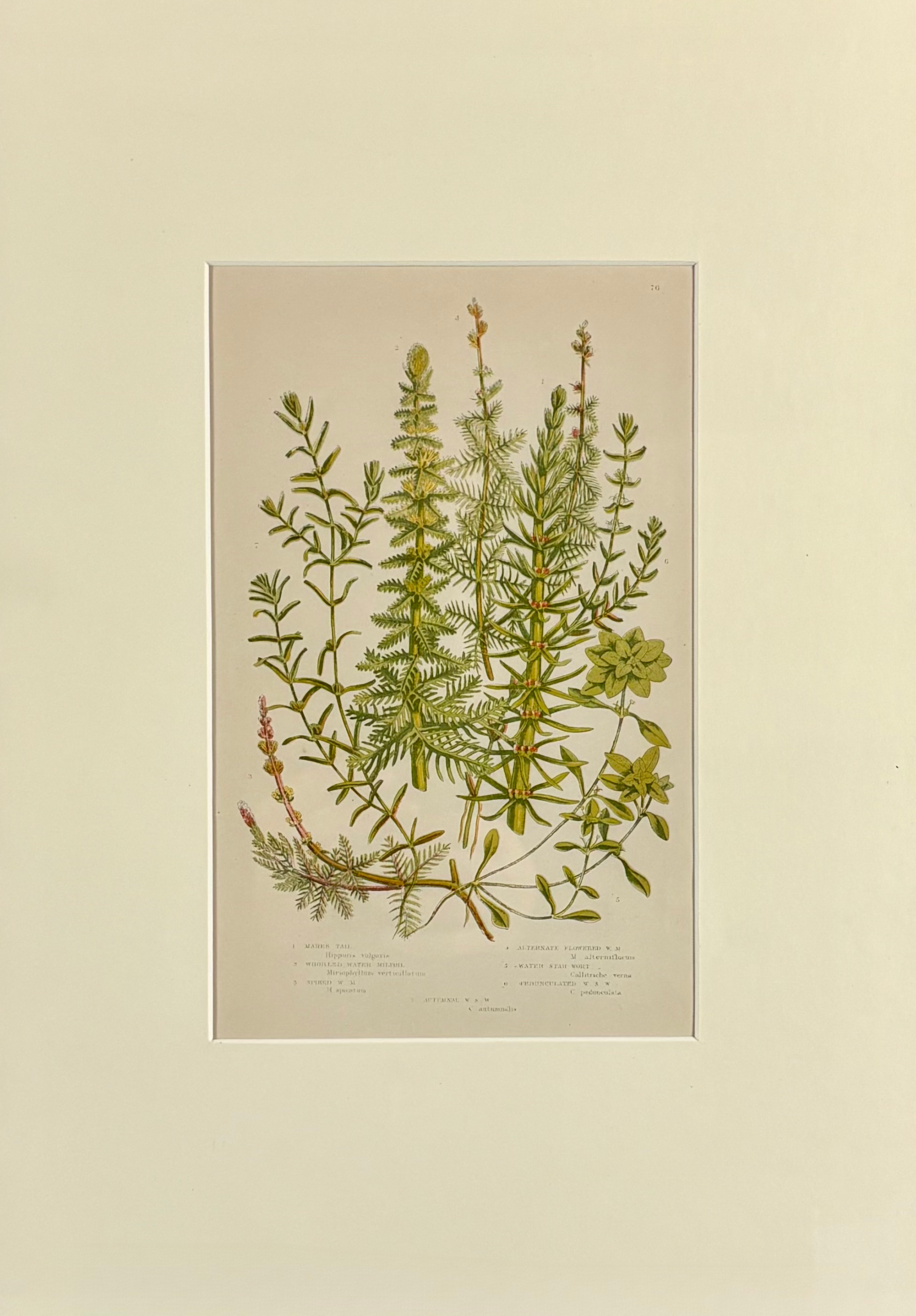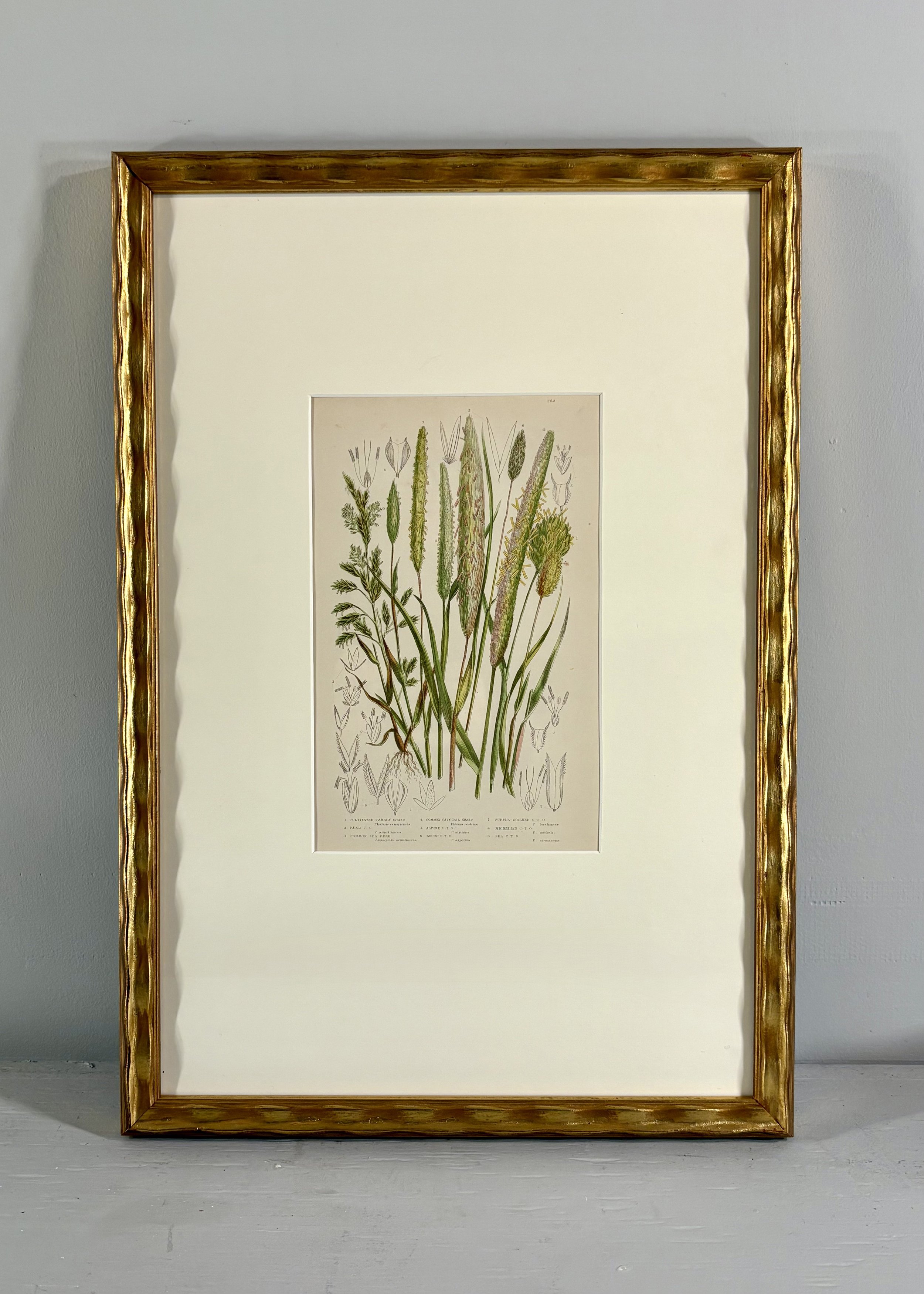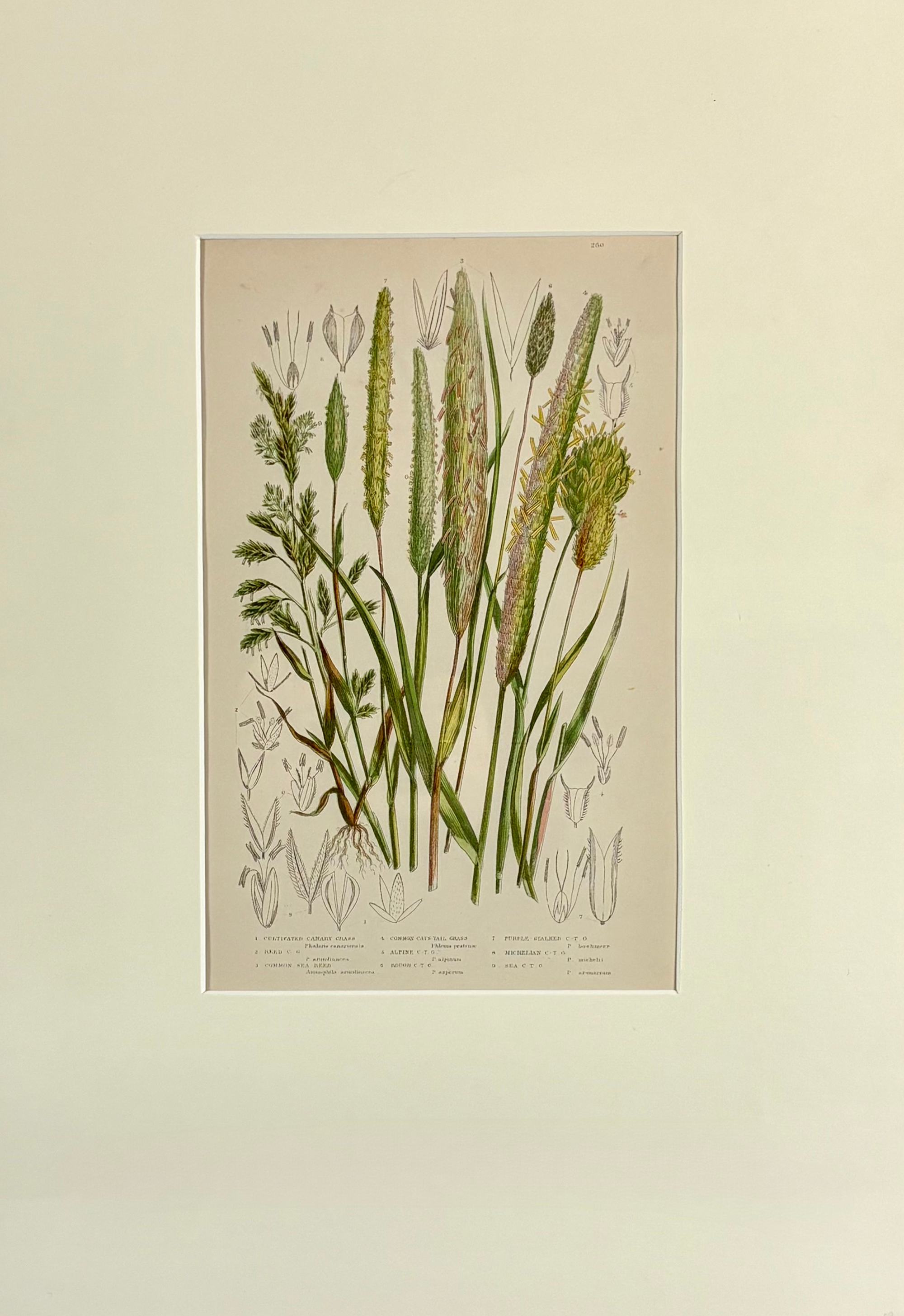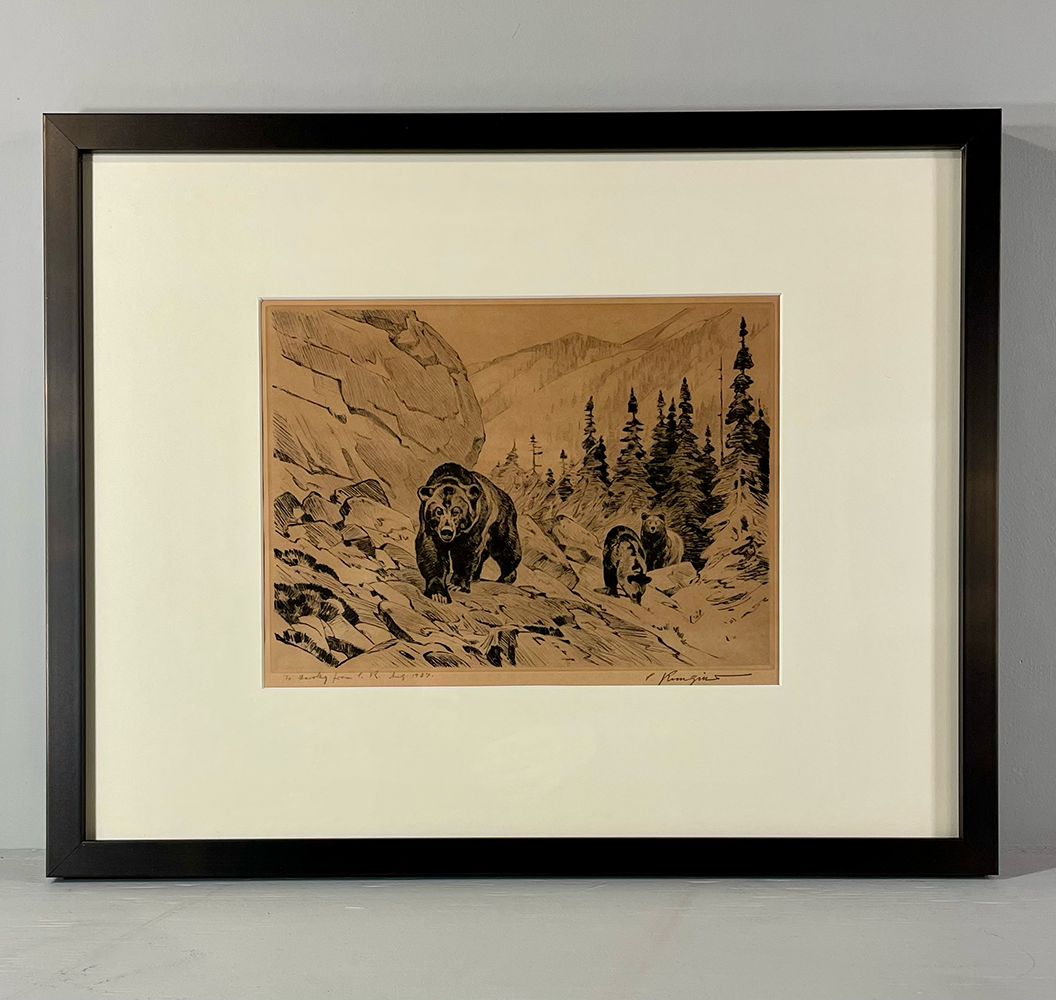 Image 1 of 4
Image 1 of 4

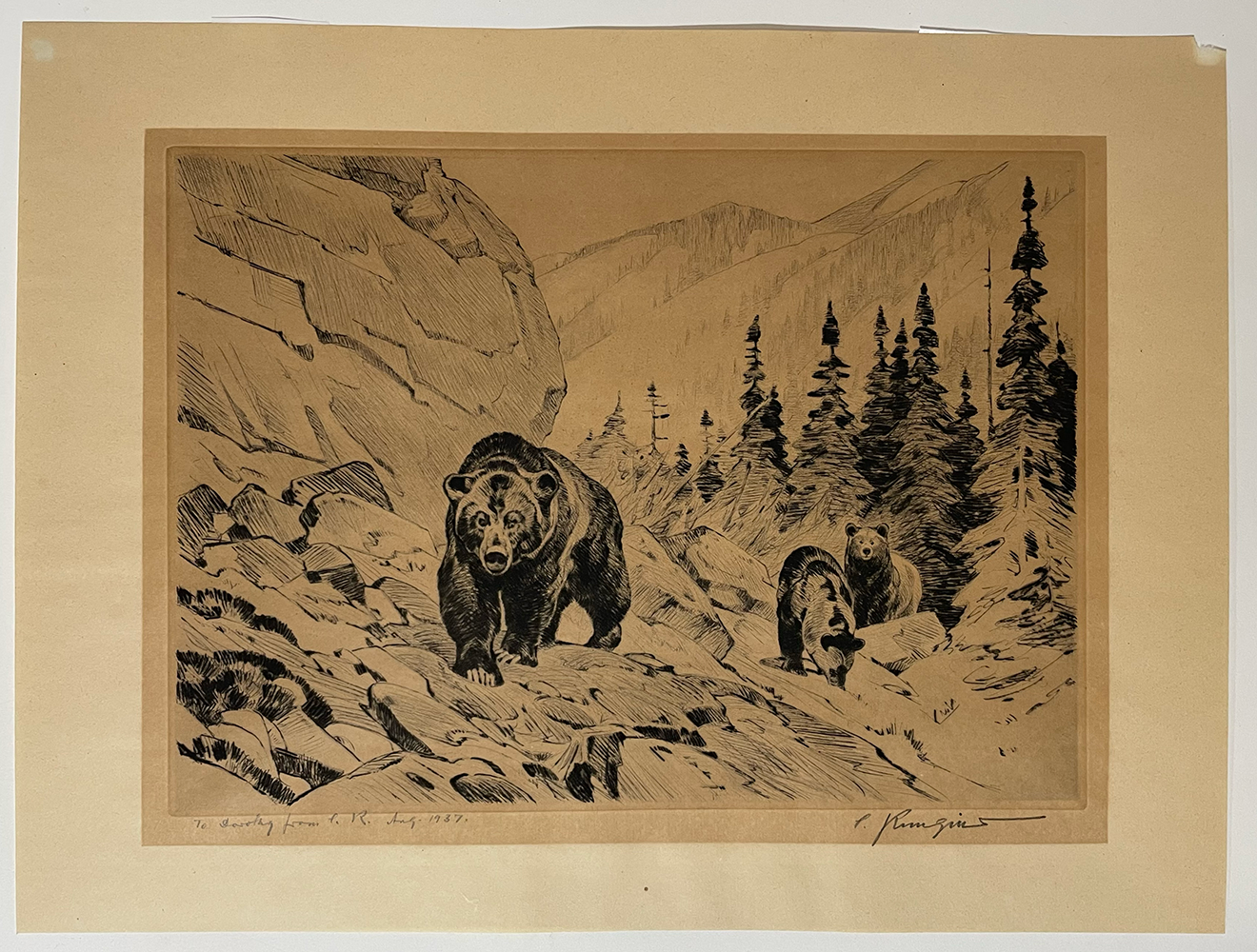 Image 2 of 4
Image 2 of 4

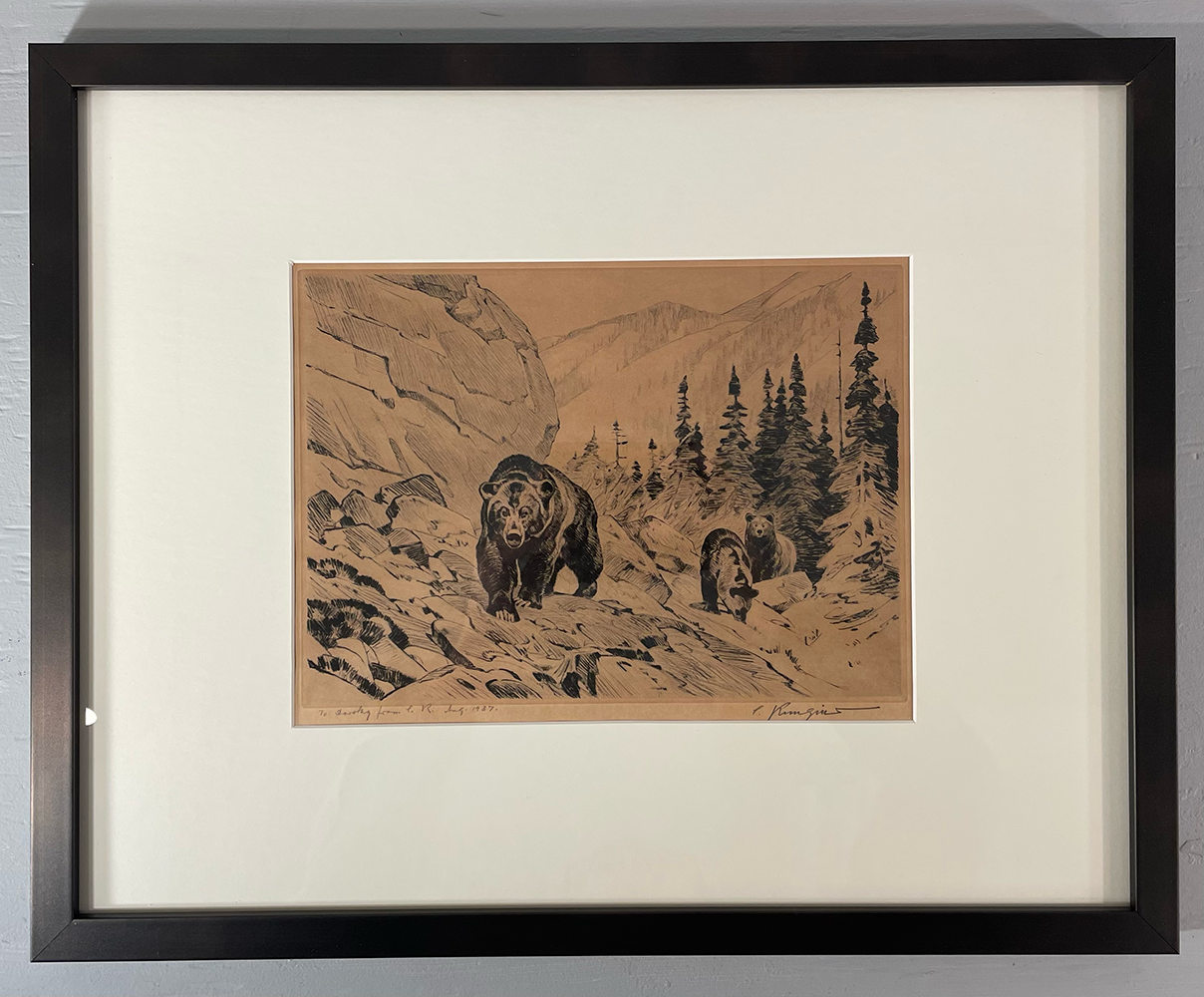 Image 3 of 4
Image 3 of 4

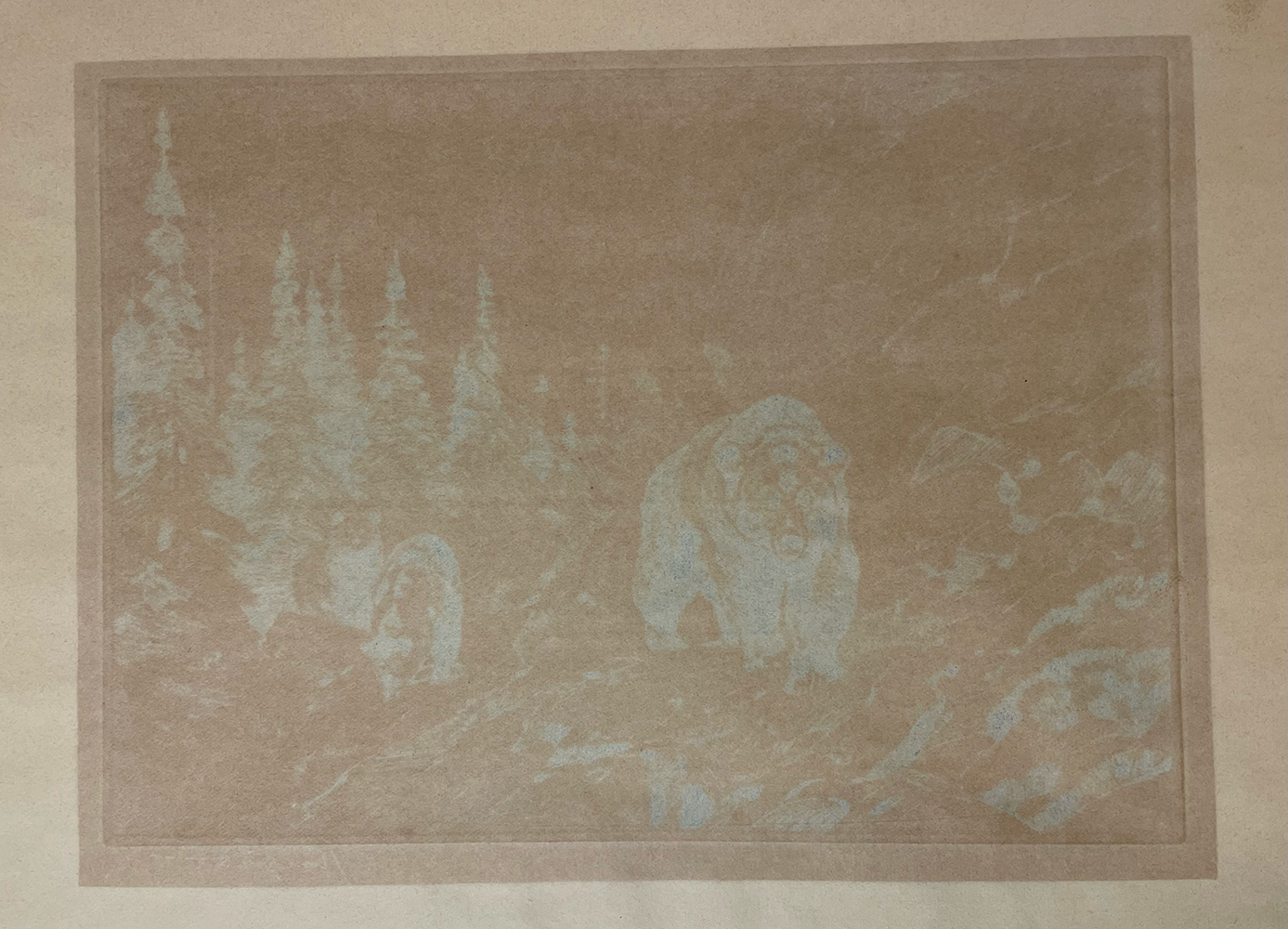 Image 4 of 4
Image 4 of 4





Carl Rungius, etching and drypoint, Untitled, Grizzly Sow and Cubs
Etching and drypoint of three Grizzly Bear sow and two cubs, signed Carl Rungius.
Inscribed "to Dorothy from C.R. August 22nd 1937"
Carl Rungius participated regularly in the annual ride of the Trail Riders of the Canadian Rockies (which formally started in 1923) in the Rockies. An example of the annual ride is 1933, when there were 70 pack horses and half as many people, over 4 days, from Lake Louise, stopping at Bow Lake along the Bow River. Some of the riders did side trips to Peyto Lake and glacier. The ride continued through to Lake Helen via the Dolomite Pass, to Isabella Lake. The third night on the Pipestone river, the fourth returning to Lake Louise. Members of the Trail Riders came from all over the world and were listed each year in articles hailing the adventure. Carl Rungius was said to have never missed an annual ride once he became involved. Many women participated, most listed in records of the annual ride with their husband’s name.
Carl Clemens Moritz Rungius (1869-1959) was born in Rixdorf, Germany but became one of the most famous painters of North American wildlife.
Influenced by his father and grandfather, both naturalists and taxidermists, at a young age Rungius showed a talent for drawing, and pursued his formal artistic training in Berlin at the Berlin Art School, the Academy of Fine Arts, and the School of Applied Arts. Following his education, Rungius began his career as a romantic painter in Germany.
However, in 1894 Rungius’s uncle invited him to travel to Maine for a hunting trip. It was then that Rungius’s passion for hunting big game and painting truly came together, as he found his inspiration for both in the wildlife of North America. Rungius spent a summer hunting in Wyoming before moving permanently to New York in 1897 where his studio allowed him easy access to the art scene of New York City as well as the wilderness of the Northeast and the Canadian Rockies.
In 1904 Rungius traveled the Yukon with Charles Sheldon, and in 1910 he traveled to Banff, Alberta for the first time. In Banff Rungius found the ideal location for painting and hunting, particularly with the prevalence of the bighorn sheep in the region. Rungius built a studio there in 1921, nicknamed ‘The Paintbox,’ and visited annually until his death in 1959.
In 1937 Rungius was in the Ptarmigan Valley with his guide and outfitter, Jim Boyce. They traveled on horseback and at one point Rungius dismounted and, at some personal risk, took pictures of a grizzly sow and her cubs from a distance of less than twenty-five feet.
This print was recently re-framed with archival mat and backing. There are no rips nor damage to the paper. See images for print prior to re-framing.
Shipping is free.
Etching and drypoint of three Grizzly Bear sow and two cubs, signed Carl Rungius.
Inscribed "to Dorothy from C.R. August 22nd 1937"
Carl Rungius participated regularly in the annual ride of the Trail Riders of the Canadian Rockies (which formally started in 1923) in the Rockies. An example of the annual ride is 1933, when there were 70 pack horses and half as many people, over 4 days, from Lake Louise, stopping at Bow Lake along the Bow River. Some of the riders did side trips to Peyto Lake and glacier. The ride continued through to Lake Helen via the Dolomite Pass, to Isabella Lake. The third night on the Pipestone river, the fourth returning to Lake Louise. Members of the Trail Riders came from all over the world and were listed each year in articles hailing the adventure. Carl Rungius was said to have never missed an annual ride once he became involved. Many women participated, most listed in records of the annual ride with their husband’s name.
Carl Clemens Moritz Rungius (1869-1959) was born in Rixdorf, Germany but became one of the most famous painters of North American wildlife.
Influenced by his father and grandfather, both naturalists and taxidermists, at a young age Rungius showed a talent for drawing, and pursued his formal artistic training in Berlin at the Berlin Art School, the Academy of Fine Arts, and the School of Applied Arts. Following his education, Rungius began his career as a romantic painter in Germany.
However, in 1894 Rungius’s uncle invited him to travel to Maine for a hunting trip. It was then that Rungius’s passion for hunting big game and painting truly came together, as he found his inspiration for both in the wildlife of North America. Rungius spent a summer hunting in Wyoming before moving permanently to New York in 1897 where his studio allowed him easy access to the art scene of New York City as well as the wilderness of the Northeast and the Canadian Rockies.
In 1904 Rungius traveled the Yukon with Charles Sheldon, and in 1910 he traveled to Banff, Alberta for the first time. In Banff Rungius found the ideal location for painting and hunting, particularly with the prevalence of the bighorn sheep in the region. Rungius built a studio there in 1921, nicknamed ‘The Paintbox,’ and visited annually until his death in 1959.
In 1937 Rungius was in the Ptarmigan Valley with his guide and outfitter, Jim Boyce. They traveled on horseback and at one point Rungius dismounted and, at some personal risk, took pictures of a grizzly sow and her cubs from a distance of less than twenty-five feet.
This print was recently re-framed with archival mat and backing. There are no rips nor damage to the paper. See images for print prior to re-framing.
Shipping is free.



